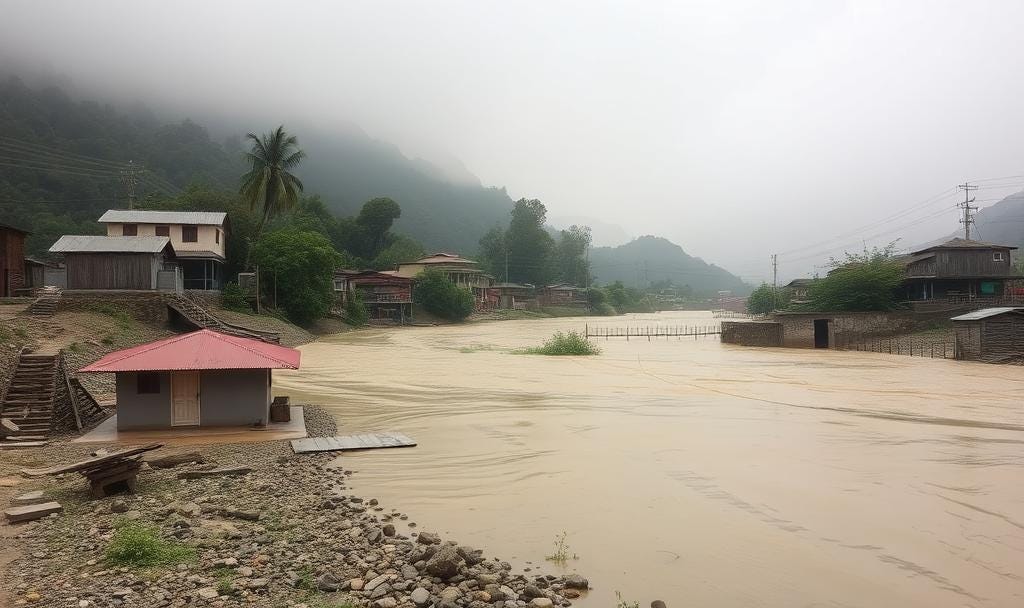Can Disaster Be Natural?
In common discourse, we often hear disasters being categorized as either natural or human-made. Earthquakes, floods, and hurricanes are routinely labeled "natural disasters," while industrial accidents, oil spills, and wars are seen as human-induced. However, this classification is not only simplistic but also misleading. Increasingly, experts and global institutions such as the United Nations Office for Disaster Risk Reduction (UNDRR) challenge this dichotomy. According to them, disaster is not a natural event—it is a social construct.
Understanding the Difference: Hazard vs. Disaster
To understand why disasters aren’t “natural,” it's essential to distinguish between hazards and disasters. A hazard is a potentially damaging physical event, phenomenon, or human activity. Hazards such as floods, earthquakes, or volcanic eruptions can occur frequently, and many times without any resulting disaster. For example, deep-sea earthquakes of high magnitudes occur often, but we don’t hear about them because they don’t affect human lives or systems.
A disaster, on the other hand, happens only when a hazard intersects with vulnerable populations or infrastructures and overwhelms their capacity to cope. Disasters, therefore, do not exist in nature by themselves—they are a social outcome. They emerge after the incident, and are shaped by how societies are prepared for, respond to, and recover from hazards.
Disaster: A Post-Incidental Phenomenon
Disaster is essentially post-event; it is a phenomenon that occurs as a consequence of inadequate planning, structural inequality, poor governance, and lack of resilience in the face of hazards. A flood that inundates an uninhabited area is not a disaster. However, the same flood becomes a disaster if it strikes a poorly planned city, destroying homes and livelihoods—especially if it affects marginalized populations who lack resources and support.
This understanding shifts the focus from blaming nature to examining the societal structures and policies that fail to prevent or mitigate damage. The UNDRR strongly recommends against using the term “natural disaster” for this reason: it obscures the root causes of vulnerability and gives the false impression that disasters are unavoidable or purely acts of nature.
Disasters Affect People Unequally
One of the most telling aspects of disasters being socially constructed is that they do not affect everyone equally. Socioeconomic status, gender, ethnicity, age, and disability all shape people’s capacity to prepare for and recover from disasters. The same flood may mean inconvenience to the wealthy, but catastrophe to those living in informal settlements without proper drainage or insurance.
Thus, what we call a disaster is really a manifestation of underlying vulnerabilities. It is this intersection—between a hazard and vulnerable conditions—that turns an incident into a disaster.
Rethinking the Language of Disasters
By moving away from the term “natural disaster,” we begin to ask more important questions: Why were people vulnerable? Why did infrastructure fail? Why were early warning systems not in place? Why were some communities hit harder than others?
This perspective is not just academic—it has real-world implications for how we build resilience, plan cities, design policies, and deliver aid. Treating disasters as natural phenomena absolves responsibility. Recognizing them as social phenomena puts the responsibility where it belongs—on human systems, planning, and preparedness.
So, can a disaster be natural? The answer is no. While hazards may arise from natural processes, disasters are neither natural nor inevitable. They are the outcome of human choices, vulnerabilities, and development paths. By understanding disaster as a social construct, we can better equip ourselves to prevent, mitigate, and respond to them—ultimately saving more lives and building a more resilient world.


